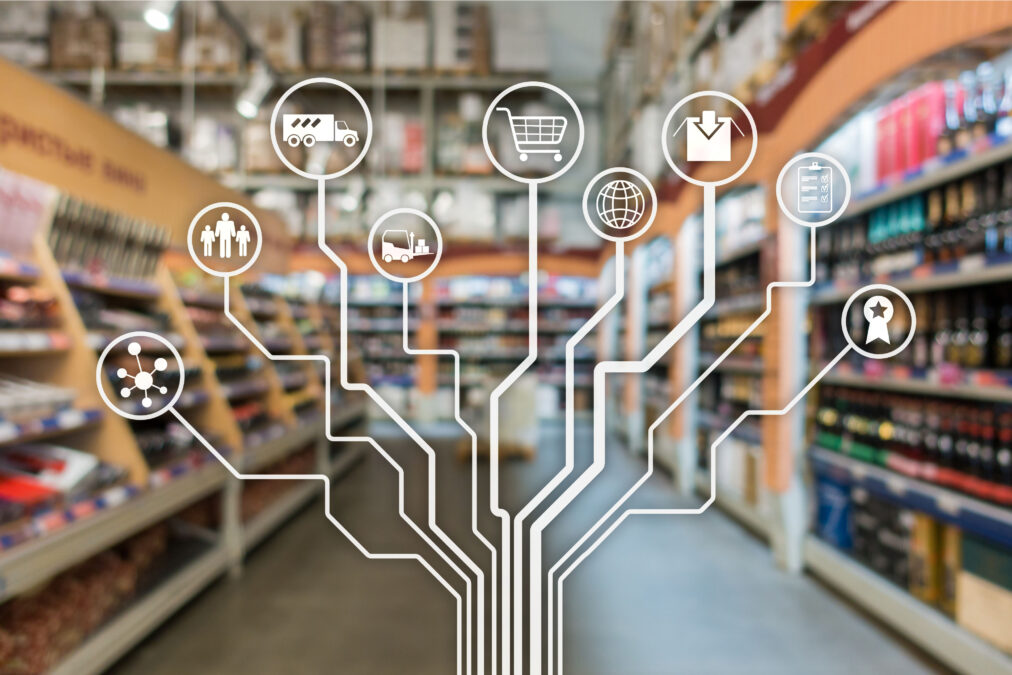There is no doubt that the retail experience is continuing to be influenced by the world of technology, but should retailers really pay attention to the hype over drone deliveries, or to the new world of ‘intuitive’ shopping experiences?
1. There’s a retail app for that!
You might think that the app market is now so overcrowded that there couldn’t possibly be room for yet another one, or one that hasn’t been done before. However, you might want to think again as it seems that more retailers than ever are developing and launching their own apps. Brands like Homebase, House of Fraser and Adidas are amongst the many to have launched new mobile apps this year. Homebase is reportedly seeing over 50% of online traffic coming from smartphone and tablet devices, with its app already achieving over 70,000 downloads.
>See also: Why are nearly half of UK consumers shunning digital retail?
2. The online shopping experience is actually boosting high street sales.
This may seem like a back to front approach, but there is now a clear and growing trend to actually increase high street presence as a means of boosting online sales. Recently, John Lewis revealed that it is expected to boost its portfolio of stores by 50% as part of a clear strategy to maximise its online retail operations. It is clear that modern retail continues to blur the lines between the virtual shopping experience and real world and perhaps most importantly, shows that the high street is not going to die off completely any time soon.
3. Are drones really part of the future for retailers?
With brands like Amazon actively trialing the use of drones and news that Alibaba has been actively delivering parcels to real customers in China, will this be something that we’ll see in mainstream retail in the near future? There is still some way to go before deliveries are replaced with flying robots, but it is interesting to see how rapidly this area is developing. Logistically, there is much more groundwork to be done before this idea can be rolled out on a widespread basis.
4. Intuitive, hyper-personalised retailing is here to stay
Another term we are seeing ever more frequently in the retail space is that of ‘hyper-personalised’ retailing. Increasingly, we are seeing that retailers are demanding solutions that enable them to have more interaction with their customers. This is particularly the case for high-end luxury and technology retailers, as well as those offering ‘new concept’ stores that are based much more on the experience and less on displaying masses of product.
For example, Burberry streamed London Fashion Week to customers in-store to allow them to view via iPads the clothes that they could then purchase in store. Initiatives that allow the customer experience to be perfectly tailored to an individual’s preferences, likes dislikes, interests and previous purchases, will undoubtedly be at the forefront of the many retail agendas in the coming months.
The issue many retailers will face, however, is whether their current legacy IT solutions and infrastructure can take the strain, or whether the increasing demand to keep up with the need to provide more complex and creative ‘intuitive’ experiences will cause many to resort to a complete IT overhaul.
5. A good front and rear is essential
As technology continues to shape the retail customer experience, retailers will be placing increasing demands on their IT provision to ensure they keep up with customer demands. Retailers will be constantly looking for ways to improve their use of technology to enhance the customer experience. Many new to market solutions are being devised to help such as in-store optimisation platform Monolith, which compiles information from queue analytics to sensory technology in order to provide bricks-and-mortar retailers with an insight into their customers’ behaviour.
Queue busting is still a huge area of concern for many, as shoppers tend to be busy and impatient. The average ‘goodwill’ time a retailer has when it comes to customers waiting is about three to four minutes – any longer could see customers abandoning their purchase and heading for the door. This is driving retailers to review their IT hardware and software provision more closely, along with any associated IT support and maintenance services, to ensure that queues and downtime are kept to an absolute minimum.
>See also: Why omnichannel retail is more than just a buzzword
Also, digital signage is increasingly starting to be used over RF, allowing a customer to pick up an item and hold it by the screen to see more details including images of every colour variation. Rather than simply providing an enhanced customer experience, it has also some functional benefits in that it can also help retailers to track all items in store as the terminal will tell them in real-time exactly where the items are, such as in the window, on the middle display or in the stock room, giving an added security awareness.
6. Security will remain a critical issue in IT provision
PCI compliance is still a huge issue for retailers, as is P2PE (point-to-point encryption). Whilst these are the standards that the bank asks all retailers to meet, they are expensive and some retailers are still choosing to take a risk of exposure over the cost of being compliant. The good news for retailers is that there are lots of flexible solutions that enable them to be P2PE compliant whilst also fitting in with their existing procedures and processes.
Sourced from Alan Watson, MD of Barron McCann










